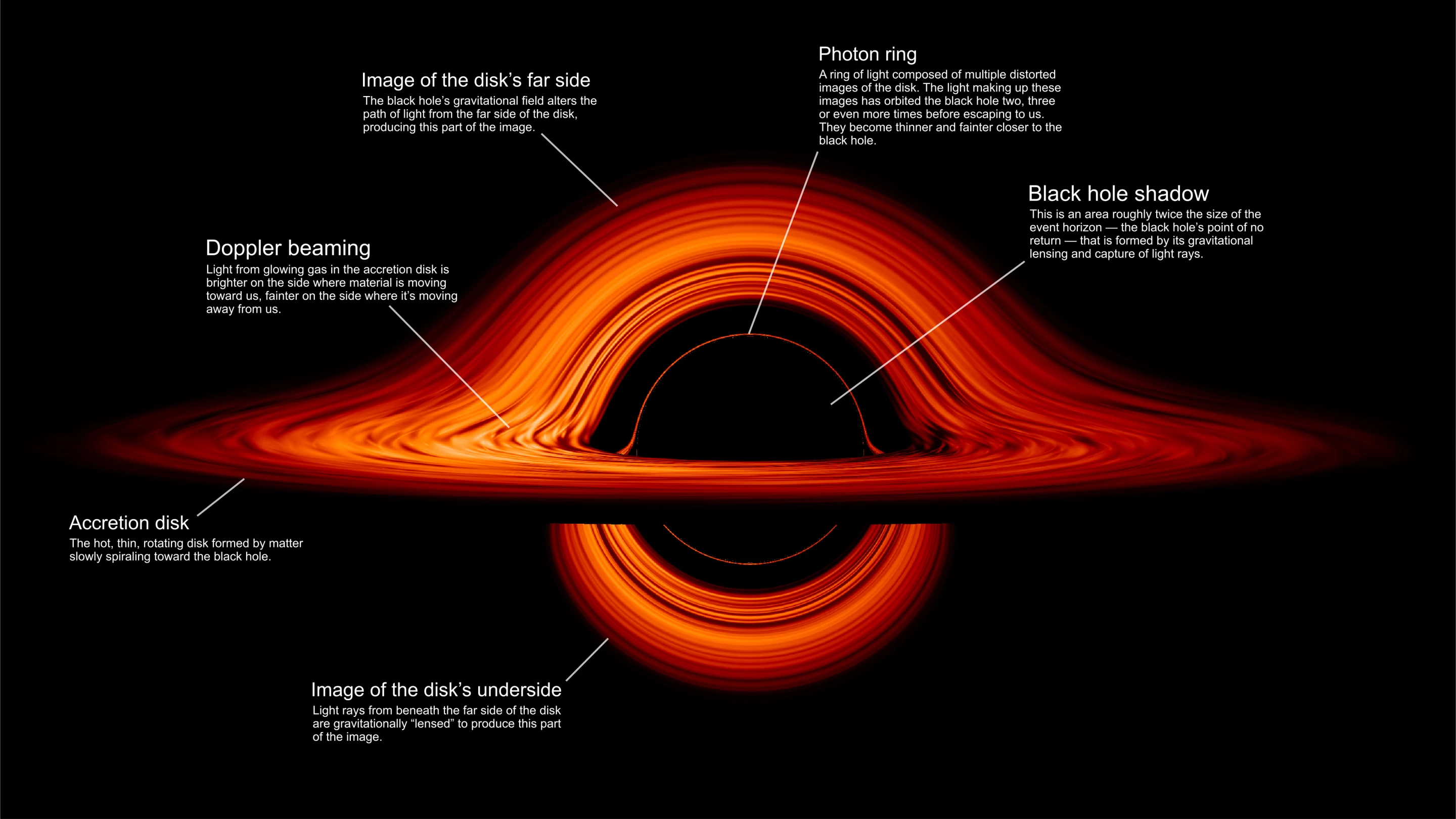NASA has released an intriguing and educational visualization of a black hole surrounded by a distorted disk of shining matter. The animation reveals how the powerful gravitational influence of a black hole can dramatically warp the light emitted from material spiraling towards its event horizon, creating a spectacular effect.
Black holes are thought to be created when huge stars many times the mass of our Sun reach the end of their lives and collapse, compressing into a tiny space. Beyond a line of demarcation known as the event horizon, the gravitational force of a black hole is so strong that even light is unable to escape its pull.
It's believed that 10 million to a billion black holes are spread throughout the Milky Way, and at the heart of our galaxy lurks a monstrous supermassive black hole known as Sagittarius A*.
Black holes emit no light of their own of course, however it is possible to observe them by looking for the light created by orbiting matter as it spirals ever closer to the singularity.
Anything from clouds of cosmic gas to planets, and even stars can be caught and ripped apart by a black hole’s gravity. As captured matter travels around the event horizon, it settles into an accretion disk. As material moves closer to the point of no return it begins to move faster and become incredibly hot, which in turn makes it glow brightly in contrast to the blackness of space.

The newly released visualization reveals the light-bending qualities of a black hole surrounded by an accretion disk. In the static version of the animation featured above, the accretion disk is seen almost edge on from the observer.
At the center of the visualization is the black hole’s shadow, which is approximately twice the size of the event horizon. Astronomers are able to discern the edge of the shadow thanks to the presence of a clearly defined boundary of light known as the photon ring. This feature is made up of multiple rings of distorted light which have already orbited the black hole several times before escaping back out into the cosmos.
Further out is the strange, warped light-signature of the accretion disk. The disk used in the simulation is flat, similar to the rings orbiting Saturn. However, the powerful gravity of the black hole works to alter the path of the light particles - or photons - being emitted by the super-hot ring structure. This gives it the unusual, twisted appearance that we see here.
As would be the case with debris orbiting a real black hole, the disposition of material in the simulated accretion disk is not uniform or smooth. The black hole’s powerful magnetic fields cause bright, hot clumps of matter to form. These knots are stretched and sheared by rings of debris moving at different speeds, creating the dark lanes that run throughout the accretion disk.

The edge of the disk closest to the observer appears relatively normal. In the simulation, matter is moving through the accretion disk from left to right. Because of this, the material on the left-hand side, which is moving towards the observer, appears brighter than the debris on the right which is receding.
The smaller ring section hanging below the shadow is comprised of light rays emitted from the underneath of the far side of the accretion disk that have been distorted through a process known as gravitationally lensing.
Light from the top of the disk’s far side has been similarly warped above the shadow.
On April 10 this year the first image of a supermassive black hole’s shadow was released to the public. The groundbreaking image was constructed from data captured by a network of eight radio telescopes known collectively as the Event Horizon Telescope (EHT).
"Simulations and movies like these really help us visualize what Einstein meant when he said that gravity warps the fabric of space and time,” comments Jeremy Schnittman, who generated the images using specialized software at NASA’s Goddard Space Flight Center in Maryland. “Until very recently, these visualizations were limited to our imagination and computer programs. I never thought that it would be possible to see a real black hole."
Source: NASA





